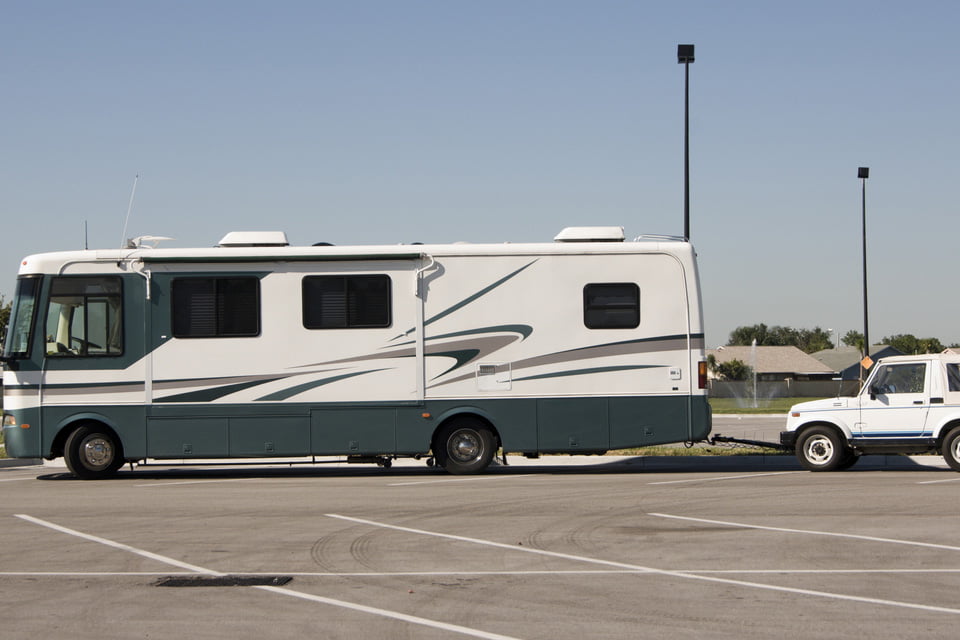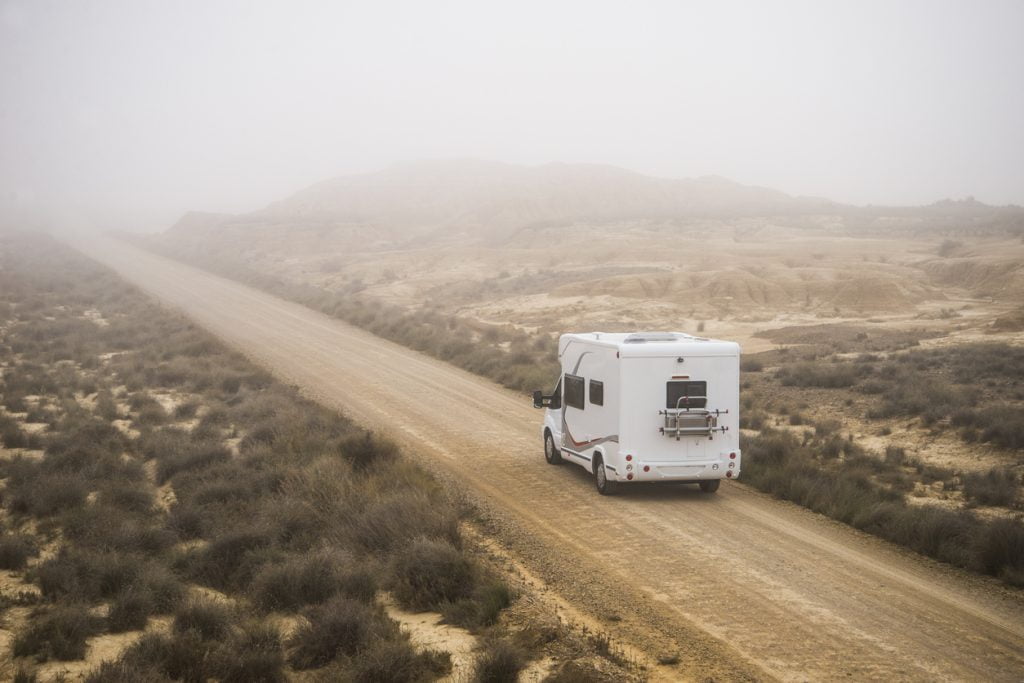Motorhomes are wonderful. They provide travellers with the freedom to go anywhere in comfort. Well… almost anywhere. Anyone who has driven one of these robust mobile homes can tell you that it isn’t easy traversing narrow, winding roads or small towns. Class A vehicles will render small trips to the grocery store a nightmare with all their additional size. So what do you do? Well, one common solution is to tow a car behind your motorhome.
Having your everyday vehicle handy for errands and side trips gives options to both part and full-time RVers. The convenience can’t be beat. However, towing an automobile isn’t a walk in the park and requires owners to put on their research hats to find an option that best suits their needs.
So, What Vehicles Can Be Towed?
Technically, every vehicle has the ability to be towed behind a motorhome. The only limiting factor is the weight capacity of your RV and the towing method being used. Generally, towing works best with small compact or regular sized sedans, however it is possible to attach SUVs or even trucks when using the proper equipment. With that being said, there are three major towing mechanisms used by RV enthusiasts. Let’s look at the pros and cons of Tow Bars, Flatbed or Enclosed trailers, and Tow Dollies.
Tow Bar or Dinghy Towing
The tow bar method, also referred to dinghy or 4-on-the-road towing, pulls a vehicle with an attachment usually in the shape of an “A”. Connecting from the motorhome hitch to the chassis or automobile frame, tow bars leave all 4 wheels of a vehicle on the road for the entire trip.
Dinghy towing can be done with RV mounted bars or vehicle mounted bars. We highly suggest the former, as RV mounted bars store easily on your motorhome and are a safer attachment. Vehicle mounted tow bars will require the use of your hitch ball and coupler, leaving more opportunities for human error to occur.
Although tow bars are incredibly popular for RVers, they aren’t suited for every vehicle. Many cars and trucks will require custom fit base plates and extensive prepping to equip a tow bar. Some vehicles downright can’t be towed in this fashion. Be sure to inspect the Owner’s Manual of your vehicle to see whether or not they can be towed “flat”. Most will give instructions on how to properly use a tow bar, such as putting it in neutral, or decoupling your drivetrain. Luckily, Motorhome Magazine has a downloadable Dinghy Towing Guide with information and towing specs for all vehicles since 1990.
TIP: you’ll want to keep up-to-date when upgrading vehicles. Just because the current model is tow bar ready doesn’t mean future iterations will be the same.
Dinghy towing will also require RVers to attach safety wires, base plates, wire the lighting of the vehicle, and install supplemental braking (required in most provinces and states). All of these extras are to ensure the safety of both your motorhome as well as the vehicle attached. After your initial setup, attaching your vehicle will be a breeze and have you back on the road quickly.
Pros
- Least expensive alternative
- Easy to store
- Space saving
- Easy to attach after initial setup
Cons
- Not suitable for all vehicles
- Can’t reverse with vehicle attached
- Adds extra mileage to the towed vehicle
- Not street legal in some areas (Inquire with the Ministry of Transportation before travelling)
Flatbed or Enclosed Trailer
One of the more expensive options, but the easiest to understand; a flatbed or enclosed trailer keeps your vehicle off the road. A lot like how you would transport a horse, the trailer supports your vehicle completely, while also having its own set of brakes and light systems. Choosing a flatbed or enclosed trailer also provides RVers peace of mind. This is because trailer towing is accepted in virtually all states and provinces with little to no extra complications of driveline de-couplers (also known as a disconnect kit), wire setups or transmission lubrication.
Besides being expensive, owning a trailer requires RVers to have extra space to store this cumbersome piece of equipment. And not just at home – many campsites start feeling cramped when a motorhome, car, and trailer are taking up valuable real estate.
Pros
- Lifts your vehicle off the road
- Less set-up compared to other options
- Doesn’t add unnecessary mileage to the towed vehicle
- Transportation approved virtually everywhere
Cons
- Expensive $$$
- Extra Storage space in and out of season
- Extra towing weight
Tow Dolly
A mixture between the two previous options, a tow dolly pulls an automobile by only two wheels. Almost akin to how a fifth-wheel is towed, RVers will drive their car onto the dolly with either the front or rear tires resting on the supports (dependent on the vehicle and dolly design). Drivers will want to check the owner’s manual of their vehicle to ensure proper setup is followed and that the correct wheels are propped. Not doing so can result in damage to a vehicles drivetrain or transmission.
The tow dolly offers a higher weight capacity when compared to a tow bar, however it has the same complications when it comes to reversing. Although front-wheel drive automobiles will have their steering system off of the road and some models can have steerable axles, jackknifing is quite common.
As well, tow dollies can be cumbersome and bulky (it is common for dollies to be 600 lbs or more). Smaller campgrounds or RV parks will have motorhome owners lacking personal space with a vehicle, dolly and motorhome taking up the site. Nonetheless, a tow dolly will save you mileage on your vehicle while being less expensive than the trailer route.
Pros
- Integrated brake systems
- Steerable axles
- Easy loading and unloading
- Great option if your vehicle can’t be towed on all 4’s
Cons
- Bigger and heavier than a tow bar
- Extra storage space needed
With all towing options mentioned, RVers and motorhome owners will want to ensure proper safety equipment is used, weight capacities are within safe ranges, and all road laws are being followed. As well, we suggest drivers to practice before heading out on extended trips. Having towing experience will prepare you for the extra length of your vehicle and can help catch faulty equipment or human errors before they becomes a serious issue.
Best of luck towing, Explorers!




